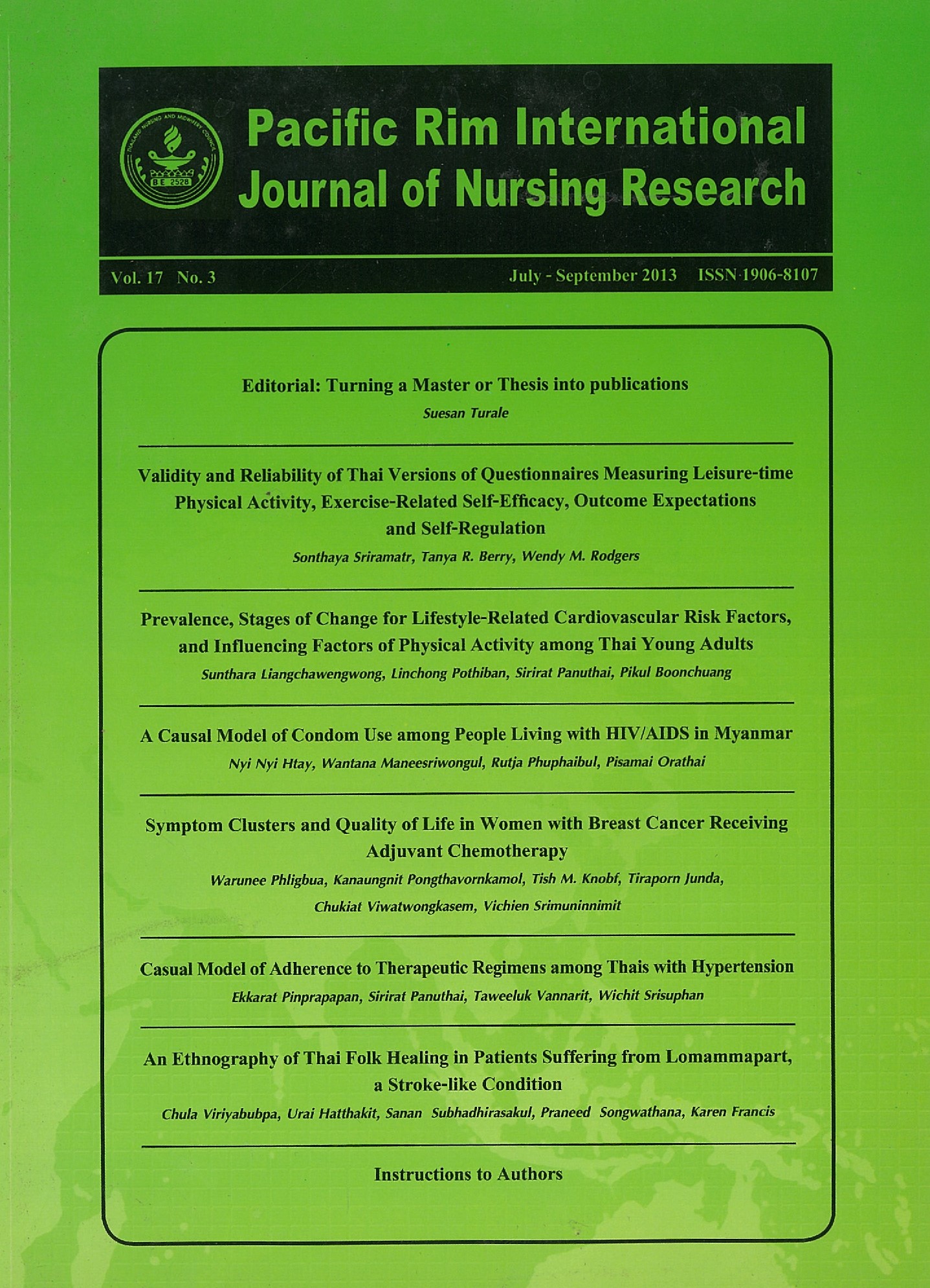An Ethnography of Thai Folk Healing in Patients Suffering from Lomammapart, a Stroke-like Condition
Keywords:
Folk medicine, Southern Thailand, stroke, massage, herbs, rituals, healersAbstract
This paper reports on an ethnographic study using Spradley’s method, that explored the treatment and outcomes of treatment for patients with lomammapart who were cared for by traditional folk healers in Southern Thailand. Lomammapart is the Thai Folk Medicine term for stroke. Many patients with lomammapart in Thailand choose treatment by traditional folk healers. Data generation involved participant observation and in-depth interviews with key informants, ten folk healers who had experience in treating patients with lomammapart as well as general informants, eight patients with the condition. Treatment outcomes for patients with lomammapart were measured using the Barthel Index to assess activities of daily living at baseline and after three months. The findings revealed that the healing methods of lomammapart, based on folk medicine, consisted of Jubsen massage, herbal medicine, ritual, and advice. Jubsen massage was performed to expel the wind in the bodylines from the upper to the lower parts of body. Herbs that were prepared as hot beverages were used to expel wind in the bodylines and intestinal system and to eliminate the toxicity from the body to the excretory system. Rituals were performed to heal the spiritual self. In addition, the perceptions of success or otherwise of the efficacy of the treatments provided and the associated treatment outcomes were reported by folk healers and patients. Measurement of activities of daily living indicated
that treatment resulted in the patients having better movement, and in sleeping, feeding, excretion, functioning of the body organs, living in society, and normal sensations. The findings of this study will help nurses’ to understand the health practices of folk healers based on beliefs and culture regarding care of such patients, so that they can try to integrate this knowledge with modern health care services to support patient needs. The rich findings also contribute to understandings of cultural knowledge of care and treatment in Thailand.
Downloads
Published
How to Cite
Issue
Section
License
Copyright: The Pacific Rim International Journal of Nursing Research, Thailand Nursing & Midwifery Council has exclusive rights to publish, reproduce and distribute the manuscript and all contents therein.








.png)



